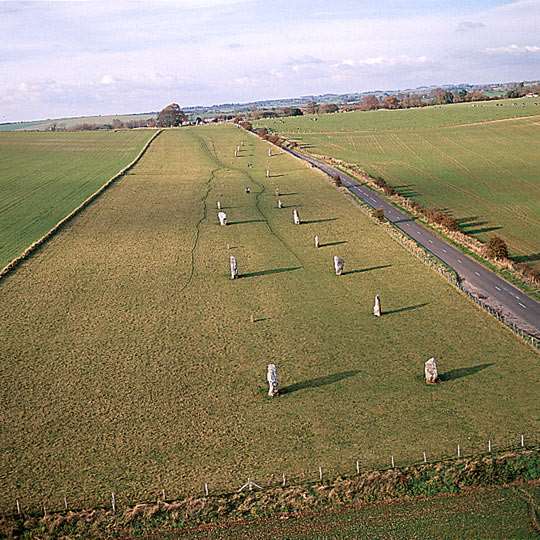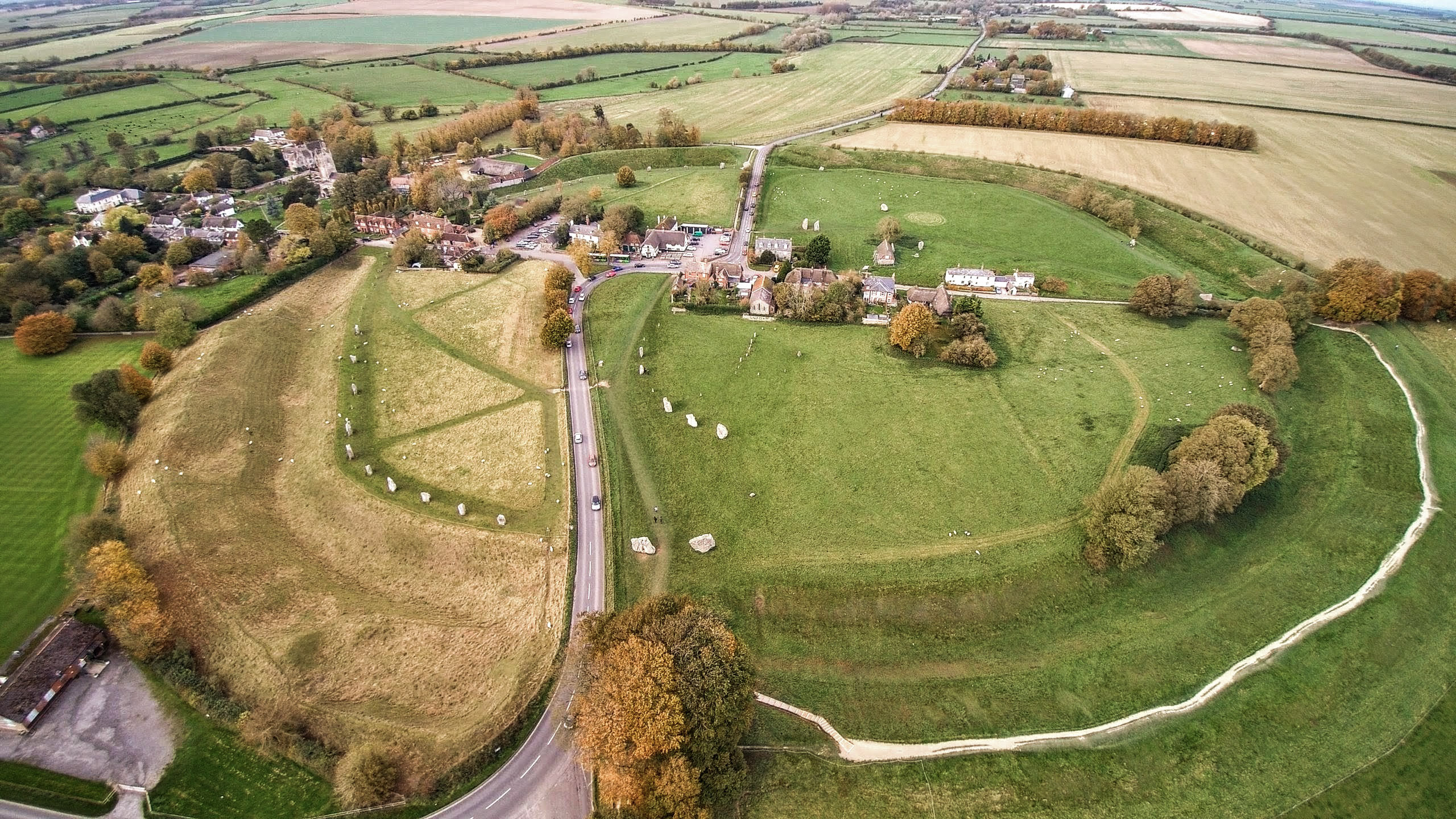We have relatives from Canada visiting us soon and we were confident that they would enjoy a trip to Avebury. We thought however that we ought to do a test walk first. We parked at the main car park and crossed the road to take a grassy path which stretched out ahead of us. Soon we saw Silbury Hill: a prehistoric artificial chalk mound near Avebury. The mound stands 40 metres (131 ft) high and covers about 2 hectares (5 acres). The hill was constructed in several stages between c.2400–2300 BC. The picture above was taken about level with the mound.
We could have continued past the mound to cross the A4 and headed up a grassy path to reach the interesting West Kennet Long Barrow, but we thought that might be overdoing it, so we took a path to the left and climbed gradually to enjoy a higher level view of the mound.
We then turned left into West Kennet Avenue, a line of paired stones with the road off to the right. They lead to the celebrated Avebury Stone Circle.
In the 1930s Alexander Keiller, heir to the Keiller marmalade fortune (!), excavated four graves, all belonging to the Beaker period (about 2500–1800 BC); three contained a single person, but the fourth had the remains of three. These were particularly important people or, possibly, sacrificial offerings in some form of ancestor worship. Elsewhere along the Avenue, excavations revealed scattered human bones, presumably also from burials. Largely thanks to the efforts of Keiller whose excavations resulted in their being found and re-erected, there are now 27 upright stones, and the sites of 37 others are marked by concrete pillars.
This aerial photo gives a clearer sense of what the avenue looks like ...

... and this one gives an impression of the stone circle with the road, rather surprisingly, going through it.

The Avebury monument is a henge, a type of monument consisting of a large circular bank with an internal ditch.This is the ditch.
Within the henge is a great outer circle of stones. With a diameter of 331.6
metres (1,088 ft), this is one of Europe's largest stone circles, and the largest in Britain. Apologies for the intrusive finger.
The further you go into the built up area you encounter a variety of more recent buildings: a restaurant, a bookshop and a National Trust shop. There is also the 16th century manor house. Each room is furnished in a different style to reflect the times in which people lived here, from the Tudor period until the 193s.
Nearby is St James's Church. The church dates from around the year 1000 AD, and still has its tall,
narrow Saxon nave, though this was later altered by the Normans, who
also added aisles in the 12th century. I couldn't manage a photo of the exterior, but the stained glass was delightful.
Avebury is a wonderful site to visit and it is not surprising that it enjoys the status of a World Heritage Site.
















